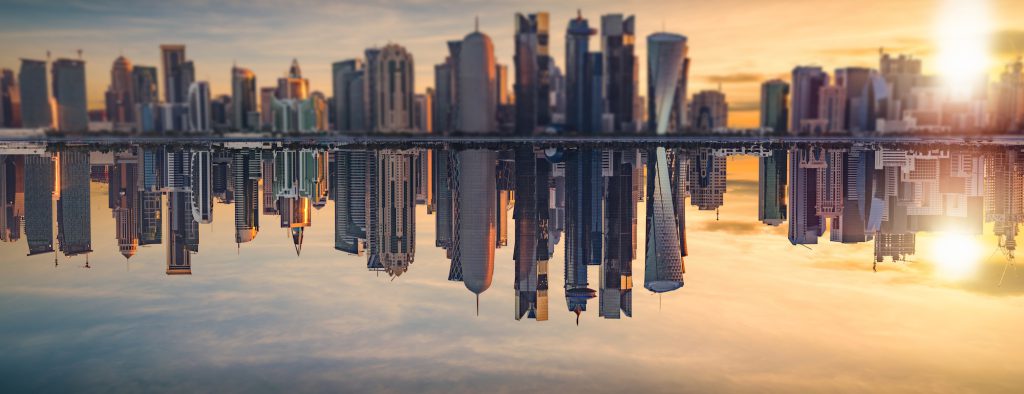Blinded

For the past eight years, I have had the opportunity to bear witness to the metamorphic stages of the construction of Doha, the capital of Qatar, a peninsular country wedded to the Arabian Peninsula. This city is an uncommon sight—more akin to the surrealness of dreams than to the flesh and concrete reality of urban centers. And, like dreams, with their contradictory nature, I have found my thoughts about the place hard to name, but easy to know.
As an anthropologist studying our relationship to nature in a setting where it can seem evasive, I have searched for the underlying human impulses and dreams that have birthed this otherworldly place I now call home. Last summer, I revisited Italo Calvino’s oneiric novel Invisible Cities. My mind, suffused in a surreal mist, felt at ease in its poetic prose. In the book, Marco Polo, the notorious Italian explorer, engages in enigmatic dialogue with Mongol Emperor Kublai Khan, who, unable to visit his vast kingdom, asks his companion to describe it for him. What follows are a series of short descriptions of cities inside the kingdom:
cities of memory, cities and desire, cities and signs, thin cities, trading cities, cities and eyes, cities and names, cities and the dead, cities and the skies, continuous cities, and hidden cities.
These invisible cities have been called metaphors, fables, and parables by readers and literary critics. The descriptions seem truthful. However, the most accurate definition I have come across is that of “states of mind.”
Doha seems to bloom, like a time-lapse video, from the desert sand. The city I think I know can become another city—sometimes overnight. I have come to realize it is not made of concrete or steel but of the things our human minds manage to conjure up—it is invisible, like Calvino’s cities.
Its population of 2.9 million, many of whom come from every other part of the globe, has composed this state of mind—a chapter in the book of cities we dream about, dreams that make up cities, invisible cities that only exist in dreams.
Blinded
I would like to add one invisible city
inside a crystal cave
backlit by the sun it is
too bright to be looked at
—like that eclipse at dawn
skyscrapers hang like stalactites
from watery heavens, and no
it never rains, the sky is
a greedy magnet and
seawater is green mercury
unable to break its sterile pull
only silhouettes can be known
of this invisible city
and infinite dreams of
making the world anew of
unbounded creation and
selfishness unconstrained
I’ll wait for dusk for
our blinded eyes to see
gold-gilded concrete, a desert
built upon desert can only ever hold
a life as invisible as itself































